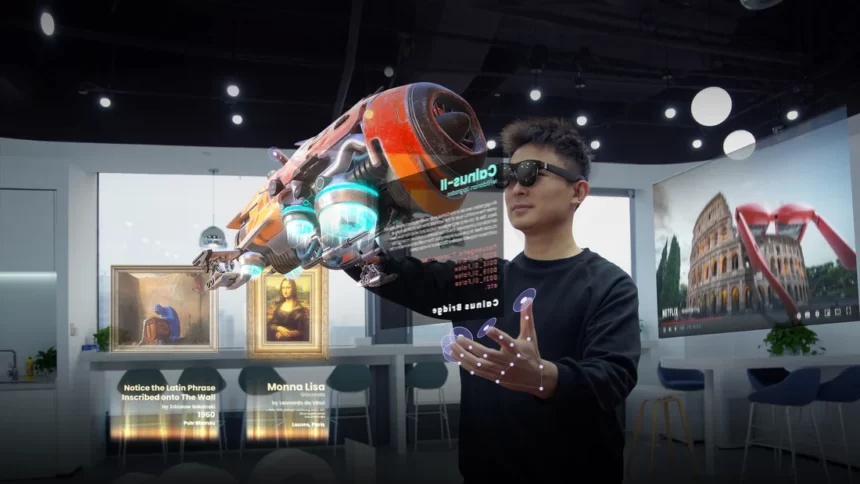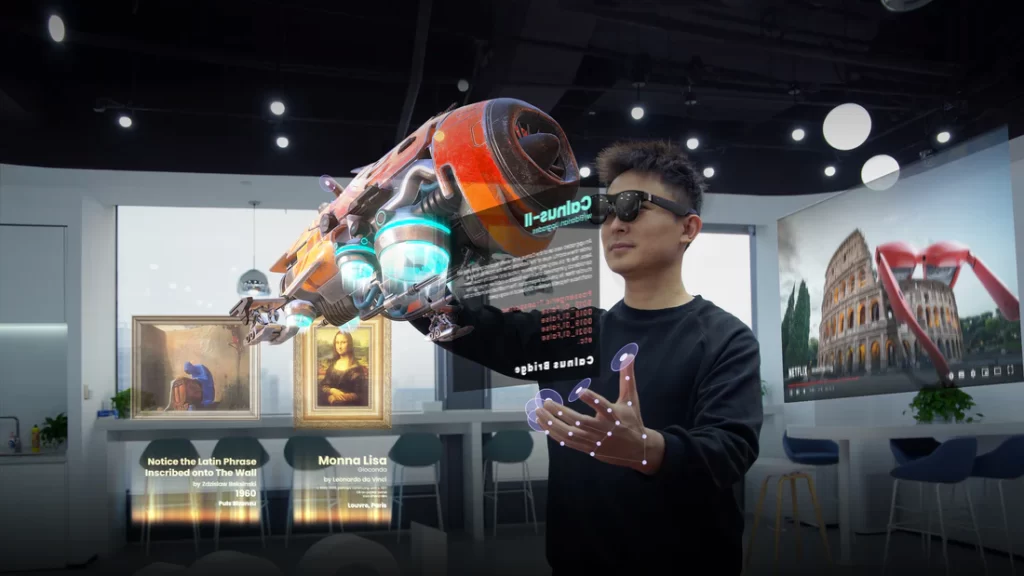Apple is unveiling its augmented reality headset – the Apple Vision Pro, in a few weeks. At $3,499, this is an AR/VR headset that bends the line between the real and the virtual world. However, if you cannot shell out just an exorbitant amount, AR company Xreal has launched its new entry in the AR glass lineup dubbed Xreal Air 2 Ultra at $699.
Pre-orders have started with shipments in March, the Xreal Air 2 Ultra is a full-fledged and featured AR glasses than Xreal Air 2 ($399) and will compete against the likes of Meta Quest 3 ($499). The company suggests Air 2 Ultra is a compelling alternative to the Vision Pro.
Xreal Air 2 Ultra is a six-degree-of-freedom (6DOF) sunglasses-style spatial computing device that projects floating images in front of the user’s eyes. The contraption of 3D cameras and environment sensors on each side of the glasses enable spatial features such as hand tracking.
Air 2 Ultra isn’t a standalone device and rather depends on your smartphone for computing. At present, the list of supported devices is as follows – Samsung Galaxy S22/ S23 series, iPhone 15, and any Windows or Mac that you can connect via USB-C.
The front layer on the glasses supports three levels of electrochromic dimming that help with varying degrees of immersion. There’s directional audio technology and dual microphones that enhance privacy and voice interactions when you are wearing it. The glasses use two Sony micro OLED panels with 1080p resolution on each eye. The displays light up to 120Hz of refresh rate, 500 nits of brightness, and can cast a virtual 3D screen measuring 154” from a distance of 13 feet.
Xreal claims that the displays are TUV Rheinland-certificate for Color Accuracy, Low Blue Light, Eye Comfort, and Flicker-Free Usage. Made up of a titanium frame, these AR glasses weigh approximately 80 grams. The Air 2 Ultra was earlier primarily marketed towards developers across China, the UK, the US, Japan, Korea, Italy, the Czech Republic, France, and the Netherlands. However, it is now confirmed that these mixed-reality glasses will be available for consumers as well.

